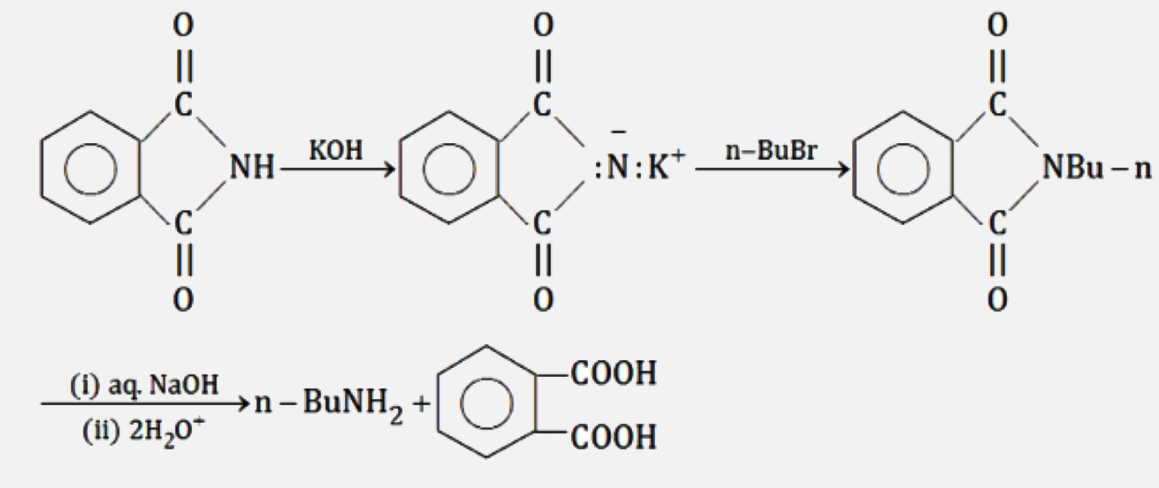Which type of reactions are called oxidation reactions?
Step-by-Step Solution:
1. Definition of Oxidation Reactions:
- Oxidation reactions are chemical processes in which a substance undergoes a change due to the addition of oxygen.
2. Example of Oxidation Reaction:
- A common example is the reaction between iron (Fe) and oxygen (O2) in the presence of water (H2O) to form iron(III) oxide (Fe2O3).
- The chemical equation for this reaction can be represented as:
4Fe+3O2+6H2O→4Fe2O3+6H2
3. Understanding Oxidation State:
- In oxidation reactions, there is an increase in the oxidation state of the element being oxidized.
- For example, in the case of iron, in its elemental form, the oxidation state is 0.
4. Calculating Oxidation State of Iron in Fe2O3:
- In Fe2O3, we need to determine the oxidation state of iron (Fe).
- The formula for iron(III) oxide (Fe2O3) indicates that there are two iron atoms and three oxygen atoms.
- Oxygen has a known oxidation state of -2. Therefore, for three oxygen atoms:
3×(−2)=−6
- Since the compound is neutral, the total oxidation state must equal zero. Let the oxidation state of iron be x:
2x+(−6)=0
- Solving for x:
2x=6⟹x=+3
5. Conclusion:
- The oxidation state of iron increases from 0 in elemental iron to +3 in iron(III) oxide. This increase in oxidation state, along with the addition of oxygen, confirms that this is an oxidation reaction.
---
- Oxidation reactions are chemical processes in which a substance undergoes a change due to the addition of oxygen.
- A common example is the reaction between iron (Fe) and oxygen (O2) in the presence of water (H2O) to form iron(III) oxide (Fe2O3).
- The chemical equation for this reaction can be represented as:
4Fe+3O2+6H2O→4Fe2O3+6H2
- In oxidation reactions, there is an increase in the oxidation state of the element being oxidized.
- For example, in the case of iron, in its elemental form, the oxidation state is 0.
- In Fe2O3, we need to determine the oxidation state of iron (Fe).
- The formula for iron(III) oxide (Fe2O3) indicates that there are two iron atoms and three oxygen atoms.
- Oxygen has a known oxidation state of -2. Therefore, for three oxygen atoms:
3×(−2)=−6
- Since the compound is neutral, the total oxidation state must equal zero. Let the oxidation state of iron be x:
2x+(−6)=0
- Solving for x:
2x=6⟹x=+3
- The oxidation state of iron increases from 0 in elemental iron to +3 in iron(III) oxide. This increase in oxidation state, along with the addition of oxygen, confirms that this is an oxidation reaction.
Similar Questions
The reaction is called

View SolutionSome oxidation reactions of methane are given below. Which of them is/are controlled oxidation reactions?
View SolutionAbove reaction is called :

View SolutionWhich of the following reaction is oxidation- reduction?
View SolutionGive a balanced equation for each of the following types of reaction:
A thermal decomposition reaction in which a metallic nitrate decomposes to give - a basic oxide.
View SolutionWhich of the following reaction involves oxidation reduction?
View SolutionIn which type of reactions related to plant photosynthesis peroxisomes are involved ?
View SolutionWhich of the following reactions involve oxidation and reduction?
View SolutionWhich reaction involves neither oxidation nor reduction?
View SolutionWhich reaction is called esterification ? Give equation,
View Solution
